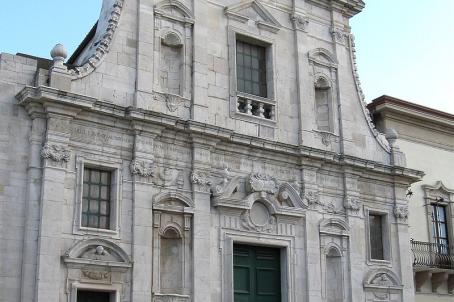Co-cathedral of Ascoli Satriano

The present cathedral of Ascoli Satriano was built in the second half of the 13th century by the Conventual Friars Minor, who dedicated it to Saint Francis, with their adjoining monastery. With a bull dated 24th September 1455, Pope Callistus III raised the Franciscan church to the rank of a new diocesan cathedral, replacing the previous one, which was destroyed by an earthquake. The new cathedral was enlarged and restored during the 17th century and was reconsecrated on June 3, 1709. It was finally completely rebuilt after the earthquake of 1871 which reduced it to ruins.





